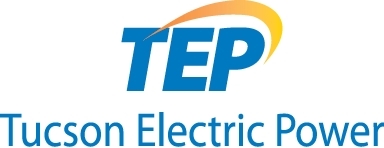
New TEP Battery System Will Support Transition to a Cleaner, Greener Grid
TUCSON, Ariz.–(BUSINESS WIRE)–Tucson Electric Power (TEP) will build a large battery energy storage system in southeast Tucson to help satisfy customers’ everyday energy needs with abundant, low-cost solar energy.
TEP’s Roadrunner Reserve system will serve as the largest energy storage system in our portfolio and among the largest in Arizona. The 200-megawatt (MW) system can store 800 megawatt hours of energy, enough to serve approximately 42,000 homes for four hours when deploying at full capacity. The system is scheduled to begin operation in summer 2025.
TEP expects to charge the grid-connected battery in the morning and early afternoon, when solar resources are most productive, then deliver stored energy later in the day when customers’ energy use is typically highest. The system will be built next to a southeast-side TEP substation.
“Roadrunner Reserve will help us maintain reliability as we ambitiously but responsibly expand our community’s renewable resources,” said Susan Gray, TEP’s President and CEO. “This new system will be particularly important in helping us satisfy peak energy needs during the summer.”
Battery systems help TEP and other utilities make better use of wind and solar resources by “shifting” their output to periods of greatest need. They also can help smooth out imbalances throughout the day as clouds block the sun or wind patterns shift. Currently, TEP has 51 MW of energy storage capacity. The largest storage system is the 30 MW battery at the Wilmot Energy Center.
TEP will own and operate Roadrunner Reserve, which will be designed and built by Scottsdale-based DEPCOM Power, Inc. The new system will use lithium iron phosphate battery units, a newer technology that offers longer life and safer operation than other types of battery systems.
Roadrunner Reserve aligns with TEP’s 2020 Integrated Resource Plan (IRP), which describes our plan to reduce carbon emissions 80 percent and add up to 1,400 MW of energy storage by 2035. TEP will file its next IRP on Nov. 1, 2023.
Roadrunner Reserve will build on recent additions of renewable resources, including:
- The 250-MW Oso Grande Wind Project, located near Roswell, New Mexico. Owned and operated by TEP, it generates enough energy to serve the annual electric needs of about 100,000 homes.
- The Wilmot Energy Center, which includes a 100-MW solar array and a 30-MW battery energy storage system south of Tucson International Airport. It is owned and operated by NextEra.
- The 99-MW Borderlands Wind Project, located about 100 miles south of Gallup, New Mexico. Also owned by NextEra, it includes 34 turbines that produce enough power to serve about 26,000 homes every year.
- Our efficient 12.5-MW Raptor Ridge solar system near Interstate 10 and Valencia Road can produce enough power to meet the annual electric needs of about 2,500 homes. It provides power for homeowners and renters participating in TEP’s GoSolar Home program.
TEP provides safe, reliable electric service to more than 445,000 customers in Southern Arizona. For more information, visit tep.com. TEP and its parent company, UNS Energy, are subsidiaries of Fortis Inc. (TSX/NYSE: FTS), which owns utilities that serve more than 3 million customers across Canada and in the United States and the Caribbean. For more information, visit fortisinc.com.
Contacts
Joseph Barrios
(520) 884-3725



